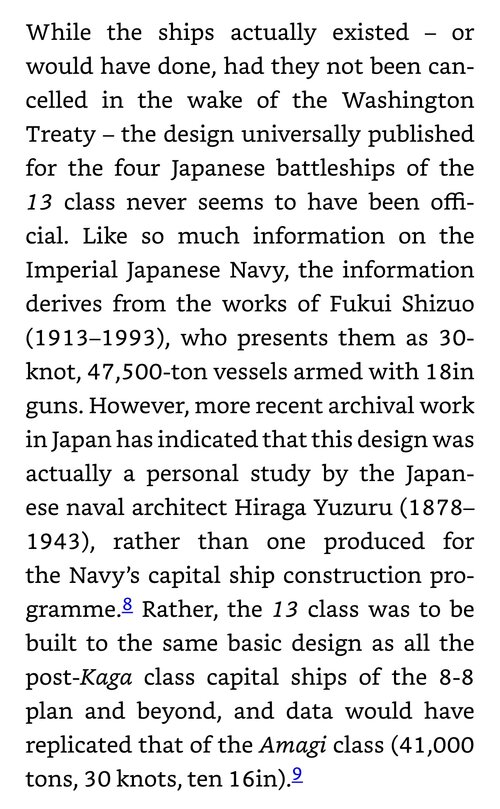/Methods to Complete the Construction of the Fleet
A memorandum dated February 2, 1920, "Method to Complete the Construction of the Fleet by 1927", stated that the four battleships to be ordered from now on should be the same as the Kaga class and the four battlecruisers should be same as the Amagi class, and the battlecruiser started construction in 1920 should be replaced with battleship, and the materials (steel plates) for it should be ordered immediately from abroad. In other words, it was stated that about 10,000 tons of steel plates equivalent to one Kaga class ship should be ordered immediately.
This memorandum indicates that the naval authorities at that time felt a sense of urgency regarding the timing of the completion of the Eight-Eight Fleet.
Under these circumstances, the basic plan of the next battleship Kii classwas decided in September of the same year. Hiraga's thought was that the same type as Tosa was too ineffective, so he planned the Kii class as a modified version of the Amagi class.
As shown in the table on page 129, hull dimensions, engines, and armament are all the same. Only the armor plan was revised to increase the thickness of the waterline armor belt by 1.5 inches, and the barbette, fore defence bulkhead, conning tower, armor deck, and smoke route by about 1 inch.
This increased the displacement by 1600 tons, slightly increased the waterline length and length between perpendiculars due to the change in draft, and slightly changed the ship's breadth due to the increase in the side armor plates. Also, speed was reduced by 0.25 knots.
As a result of these revisions, it is concluded that the Kii class has the same armor and armament as the Kaga class, but has an advantage in speed.
The Kii class is generally interpreted today as four ships of the same type, but as mentioned above, the IJN Technical Headquarters intended to plan the third and later ships as a new type. On October 12, 1921, the construction order was issued for only two ships, the Kii at Kure Arsenal and the Owari at Yokosuka Arsenal. At this time, it was already one month before the Washington Naval Conference, and of course the construction of these two ships were destined to be cancelled before their keel laying.
In August 1921, Hiraag left behind a memorandum in which he stated the following regarding the extent of improvements that could be made to battleships and battlecruisers currently under construction or planned, based on the assumption that the Washington Naval Conference would impose limitations on future capital ships.
Kaga and Tosa cannot be revised because their construction is already underway, Amagi and Akagi can be revised if decided immediately, Takao and Atago can be revised since they are not yet under construction, and the Kii type can also be revised.
Specifically, for the Amagi class, the thickness of the waterline armor belt was increased by one inch, the armor deck was increased from 3.75-inch to 4-inch, and the turret canopy was increased from 5-inch to 6-inch. The weight increase due to these revisions is expected to be 634 tons, and the speed is estimated to decrease by 0.125 knots to 29.825 knots.
As for the bar berbette, it is stated that no revision was possible because the order had already been placed with England. The fact that barbette armor of the Amagi class was made in a foreign country is mentioned in the memorandum, which suggests that the amount of work could not have been handled by steelworks of the Kure arsenal. Was there any problem with confidentiality?
As for the Kii class, the armor belt was increased by half an inch to 12-inch, the rear waterline armor belt was increased by one inch to 10-inch, and the thickness of the main gun turret front shield was changed from 12-inch to 13-inch, resulting in an increase of 130 tons to 43,990 tons and a speed was calculated as 29.625 knots.
In the explanation of the Kii class to the Congress, the construction cost of one vessel was requested at 37,269,000 yen and the displacement was 41,000 tons (909 yen per ton). The actual construction cost was expected to be nearly double this amount.












































